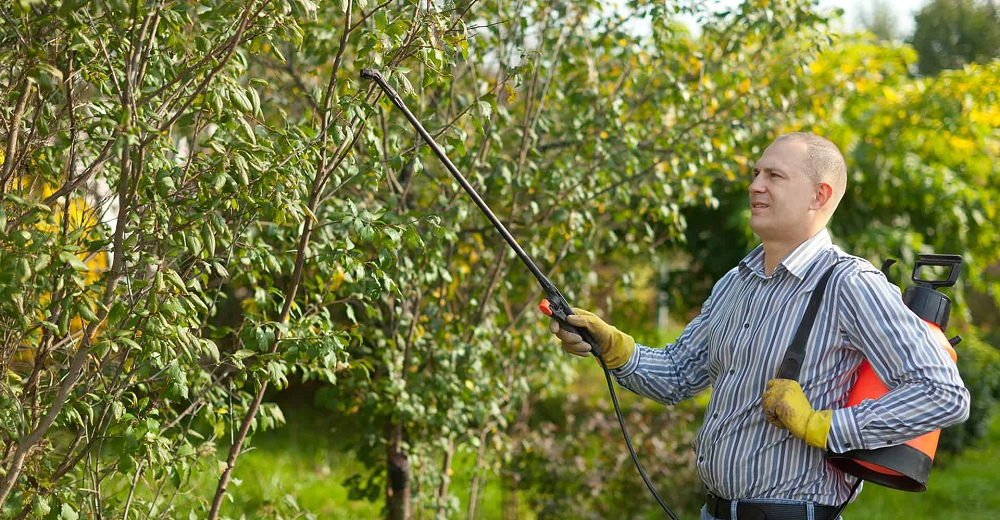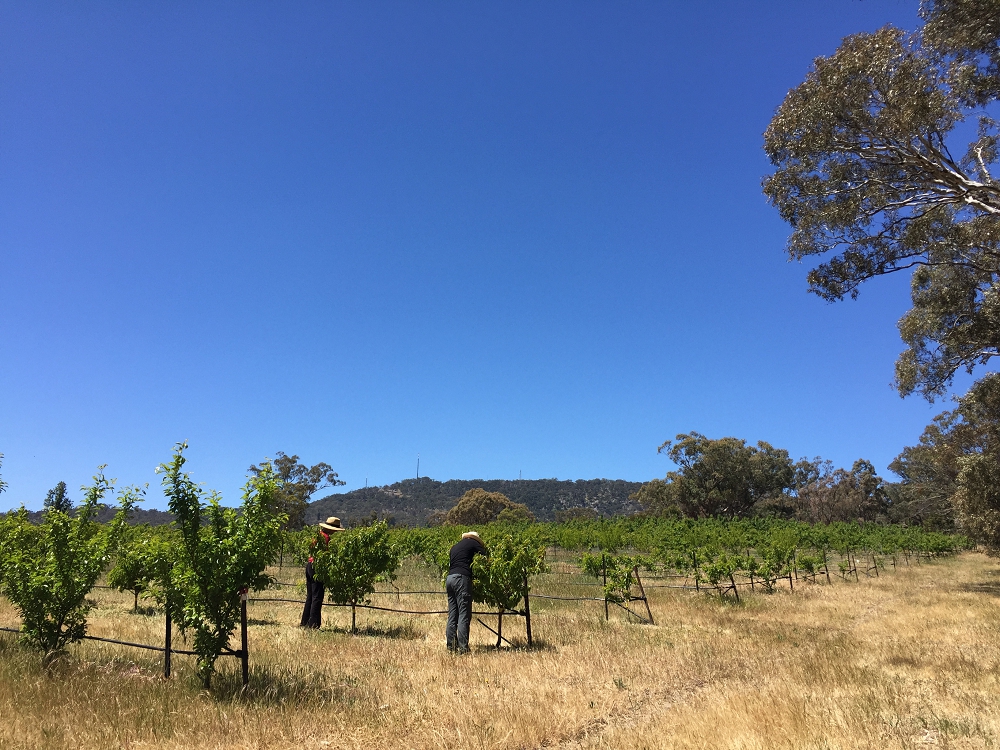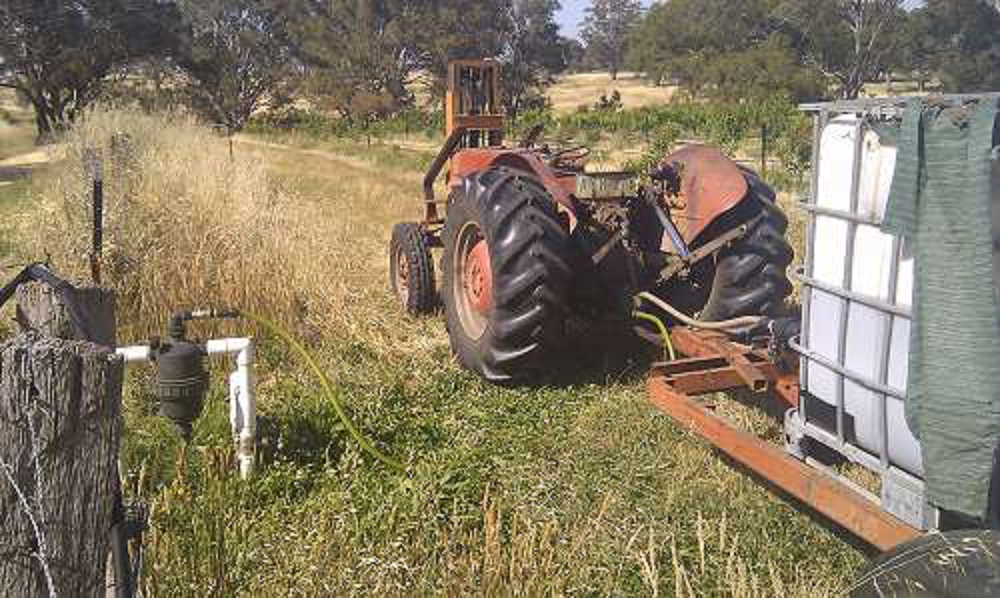Estimated reading time: 8 minutes
In the world of fruit trees, spring is the ‘engine room’ of the fruit season. It’s when most of the important stuff that determines how the season will turn out happens.
Related Articles
Do your fruit trees have the right pollination partners?
Estimated reading time: 6 minutes Pollination partners for fruit trees are one of those things that most gardeners have heard of, but few really…
Providing frost shelter for fruit trees
Learn how to provide frost shelter for your fruit trees in spring to protect the flowers and fruit from damage.
How to buy a good fruit tree
Learn how to select a healthy fruit tree when you’re buying from a nursery, to give your trees the best possible start in life.
The more you understand what each season in your garden is like, the easier it makes your planning. So we thought it a great time to sum up what spring as a fruit grower looks like.
All these jobs need to be done whether you have 6 trees or 6,000, so hopefully, this list should be useful for everyone with fruit trees!
Transitioning from winter to spring
Here on the farm, as we move from winter to spring, the way we prioritise our jobs gradually shifts.
In winter we’re more likely to do jobs that are good for the trees (and next year’s fruit) in the longer term. This includes things like compost and fertiliser.
In spring, the focus shifts to what’s most crucial for looking after this year’s fruit in the short term. This includes jobs like netting, taping, and thinning.
In summer, once the fruit is ripe and ready for picking, the top of the list every day is, “what needs picking”?
Reducing overwhelm with good planning (and good friends)
The list of jobs to do for your fruit trees in spring can end up looking very long. That’s where the overwhelm comes in. However, as long as you have a plan, and are prepared for the fact that spring needs your regular attention, it’s all quite doable.
If you have a lot of trees in your care it’s great to lighten the load by having friends or volunteers to help out. In our case (with 4,000 trees to look after), we’ve welcomed volunteers and employed people to help where necessary. That way we can make sure the jobs all get done.
Spraying

This job starts way back in August when you have to start monitoring for the first signs of budswell in the peaches and nectarines.
From then on you should be monitoring regularly for two things: the trees as they flower, and the weather. It’s important to make sure all trees have an organic fungicide on at the right time.
For us, this job can take anything from 2 hours to all day, but if you’re only doing a few trees (say less than 100) it should be quite quick. This does depend on having the right equipment.
Depending on the weather, you might need to spray a couple of times a week – or not for weeks!
Weed control

With spring comes rain and warmth, and the grass starts growing.
This is basically a good thing because all these lovely annuals start pumping carbon into the soil. But you can’t let the weeds get too long around the trees, so it means you need to start mowing and keep mowing regularly. This job goes right through summer until the rate the weeds are growing slows down.
A different way to look at this job is to replace the “weeds” with a thriving understory beneath your trees. If you choose your plants well, you may never need to mow at all!
Taping

This job is simple and quick. It involves putting a sticky barrier around the trunk of the tree. This stops crawling insects from climbing into the tree without trapping or harming them.
It only takes a couple of minutes per tree and is one of the most important jobs we do for trees where the main fruit-eating pests are earwigs and garden weevils. This particularly applies to cherries and nectarines.
One of the tricks we’ve learned over the years is—don’t put it off!
It’s really good to get this job done nice and early before the earwigs are in the tree. If you put the tape on after they’re in the tree then you’re trapping them up there! It’s also a sticky job, so it’s definitely worth gathering a couple of buddies, getting hold of some disposable gloves, and going for it!
Irrigation system

Watering itself needs to start happening as soon as the weather is warm enough and the soil dry enough to call for it. This will be different each year but can be as early as mid-spring.
Before that, there are lots of little maintenance jobs that can practically be done in late winter. This means you get them out of the way before spring craziness happens.
It’s a really great idea to review and upgrade your system every year to make it easier and more effective, which you can find out more about here.
For us that includes:
checking the pump and doing maintenance
checking and cleaning out all the filters
flushing out the irrigation lines in each orchard, and
turning the system on and checking every dripper.
Admittedly, this is a job that’s much more pleasant to do in warm weather (yep, you’re gonna get wet…). From a time-management point of view, the earlier the better!

Thinning
Fruit thinning is one of those jobs that you can’t start until the fruit is big enough, but as soon as you start it should have been finished yesterday!
Luckily, this job is also quite spread out and can be done in small, manageable chunks. At our place there’s usually time to finish thinning the apricots by the time the peaches and nectarines are ready.
Then we move onto the plums, the apples, and the pears. It’s a big job because most trees need thinning (except cherries) and each tree can take a long time. It’s definitely one job where many hands make light work.

Netting fruit trees in spring
There’s not much point doing all these other jobs if then we let the birds eat the fruit (and they will, they always do!).
So, as soon as the thinning and taping are done, it’s time to get the nets on.
Netting is another team effort. For us, this means one person to drive the tractor forward to drape the net down over the row of trees and two to hold the sides of the net to spread it out over the trees.
Then we all help with tying the net down so the birds can’t get in underneath. Again, this job doesn’t take very long (only about 1/2 hour per row, plus the setting up time of getting the equipment and finding the right nets!).

Feeding the microbes
In early spring your fruit trees get their energy from the nutrients they stored in their bark, roots, and buds the previous season. As soon as that runs out they need to be able to quickly access whatever they need from the soil via their roots.
That means you need to make sure the soil microbes are active and well-fed, so they can feed the trees.
Compost tea, microbe foods, organic matter, and aged manure are all great things to use. Any or all of these can be applied from early spring onwards. At our place, compost tea is great because it is a liquid and so can be injected straight into the irrigation lines. (On a backyard scale it’s an easy knapsack job.)
Picking the fruit
After all that, it’s kind of a relief when the fruit starts ripening. For us, fruit harvest time is inextricably linked to the cricket season due to hours of listening to cricket in the packing shed.
After spring the rhythm morphs into a more steady summer pace of picking and eating all that delicious organic fruit you’ve worked so hard to nurture.
Having a plan
Of course, there are always more jobs you need to be doing in your garden. Caring for fruit trees in spring can feel incredibly overwhelming, as if you’re not ever going to catch up.
This is made much worse by not really knowing what you should be doing, or what you should be prioritising.
Want to know the solution?
Create a simple annual plan that you can follow each year. The easiest way to get going is just to start a diary, so at the very least you’re writing down when you do things. Over time, you’ll gradually get an awesome plan in place that can guide you every year.
Related Articles
Do your fruit trees have the right pollination partners?
Estimated reading time: 6 minutes Pollination partners for fruit trees are one of those things that most gardeners have heard of, but few really…
Providing frost shelter for fruit trees
Learn how to provide frost shelter for your fruit trees in spring to protect the flowers and fruit from damage.
How to buy a good fruit tree
Learn how to select a healthy fruit tree when you’re buying from a nursery, to give your trees the best possible start in life.







Hi, I just wanted to let you know how incredibly helpful your emails are to us! we only have about 20 mixed fruit trees and learning something new all the time – getting there slowly but surely, thanks to you!
Cheers!
Renea
We’re so glad you find it useful Renea, thank you for the feedback! Meg – Grow Great Fruit team.